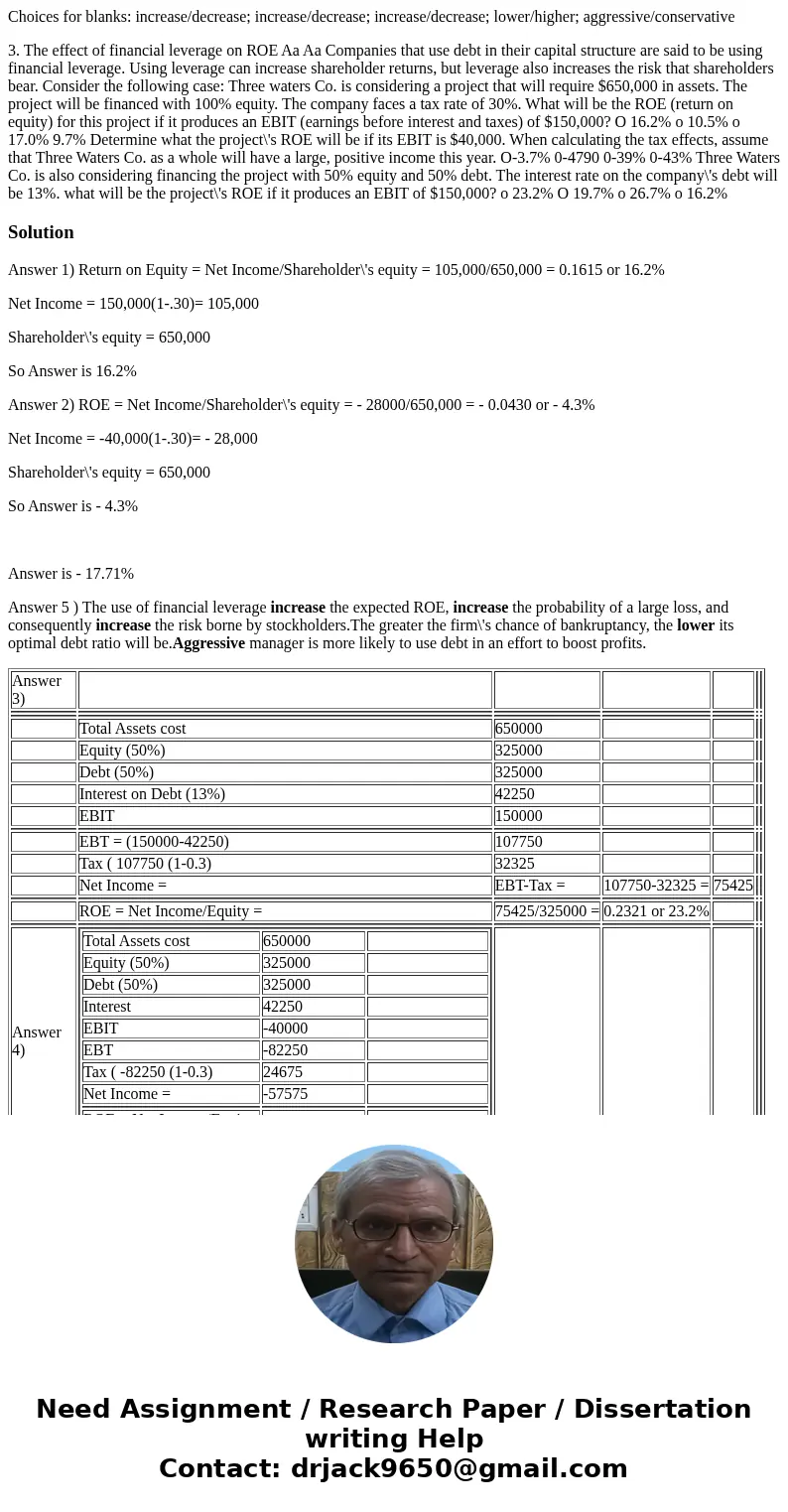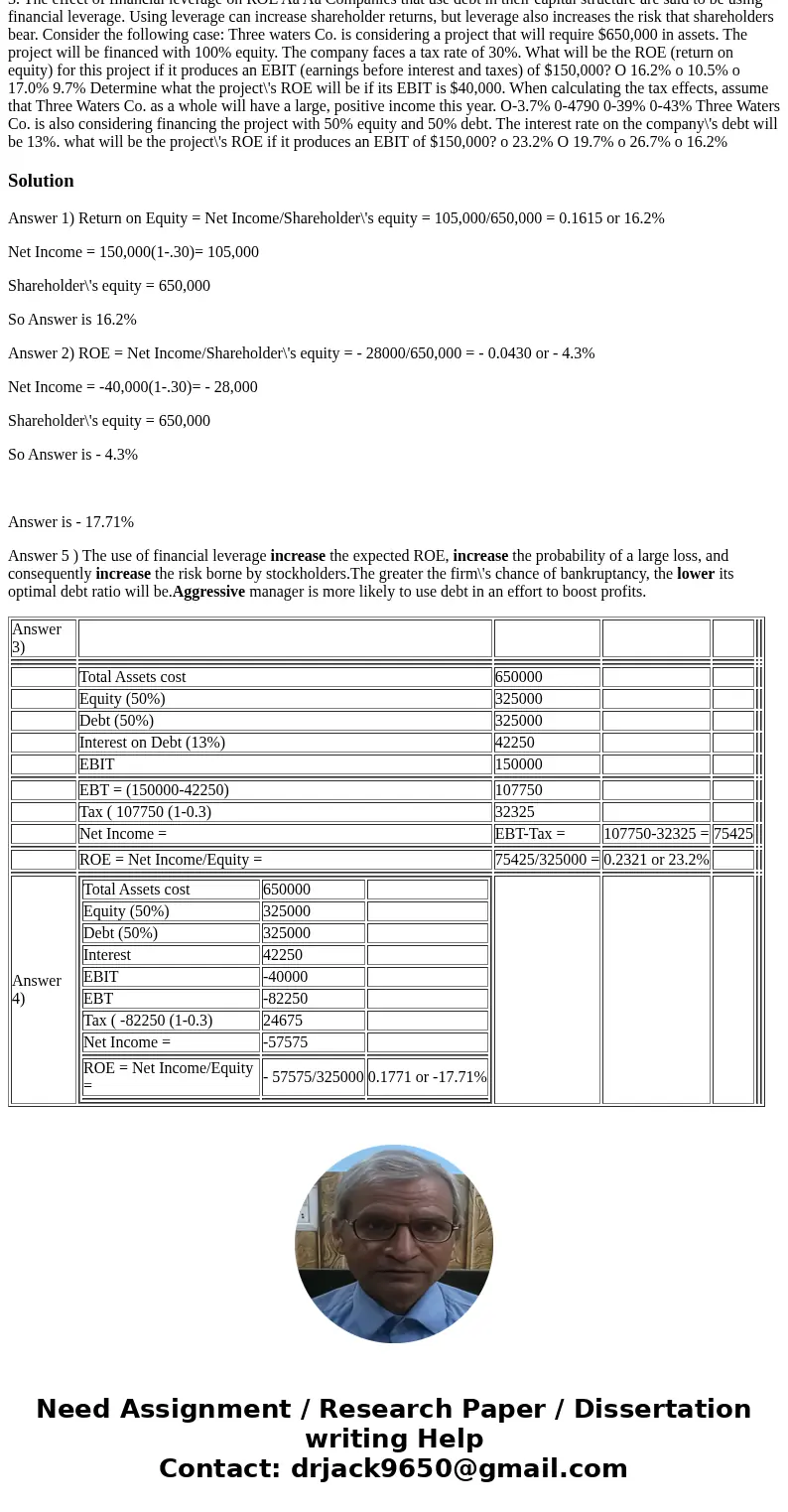Choices for blanks increasedecrease increasedecrease increas
Choices for blanks: increase/decrease; increase/decrease; increase/decrease; lower/higher; aggressive/conservative
3. The effect of financial leverage on ROE Aa Aa Companies that use debt in their capital structure are said to be using financial leverage. Using leverage can increase shareholder returns, but leverage also increases the risk that shareholders bear. Consider the following case: Three waters Co. is considering a project that will require $650,000 in assets. The project will be financed with 100% equity. The company faces a tax rate of 30%. What will be the ROE (return on equity) for this project if it produces an EBIT (earnings before interest and taxes) of $150,000? O 16.2% o 10.5% o 17.0% 9.7% Determine what the project\'s ROE will be if its EBIT is $40,000. When calculating the tax effects, assume that Three Waters Co. as a whole will have a large, positive income this year. O-3.7% 0-4790 0-39% 0-43% Three Waters Co. is also considering financing the project with 50% equity and 50% debt. The interest rate on the company\'s debt will be 13%. what will be the project\'s ROE if it produces an EBIT of $150,000? o 23.2% O 19.7% o 26.7% o 16.2%Solution
Answer 1) Return on Equity = Net Income/Shareholder\'s equity = 105,000/650,000 = 0.1615 or 16.2%
Net Income = 150,000(1-.30)= 105,000
Shareholder\'s equity = 650,000
So Answer is 16.2%
Answer 2) ROE = Net Income/Shareholder\'s equity = - 28000/650,000 = - 0.0430 or - 4.3%
Net Income = -40,000(1-.30)= - 28,000
Shareholder\'s equity = 650,000
So Answer is - 4.3%
Answer is - 17.71%
Answer 5 ) The use of financial leverage increase the expected ROE, increase the probability of a large loss, and consequently increase the risk borne by stockholders.The greater the firm\'s chance of bankruptancy, the lower its optimal debt ratio will be.Aggressive manager is more likely to use debt in an effort to boost profits.
| Answer 3) | |||||||||||||||||||||||||||||||||||||||
| Total Assets cost | 650000 | ||||||||||||||||||||||||||||||||||||||
| Equity (50%) | 325000 | ||||||||||||||||||||||||||||||||||||||
| Debt (50%) | 325000 | ||||||||||||||||||||||||||||||||||||||
| Interest on Debt (13%) | 42250 | ||||||||||||||||||||||||||||||||||||||
| EBIT | 150000 | ||||||||||||||||||||||||||||||||||||||
| EBT = (150000-42250) | 107750 | ||||||||||||||||||||||||||||||||||||||
| Tax ( 107750 (1-0.3) | 32325 | ||||||||||||||||||||||||||||||||||||||
| Net Income = | EBT-Tax = | 107750-32325 = | 75425 | ||||||||||||||||||||||||||||||||||||
| ROE = Net Income/Equity = | 75425/325000 = | 0.2321 or 23.2% | |||||||||||||||||||||||||||||||||||||
| Answer 4) |
|


 Homework Sourse
Homework Sourse